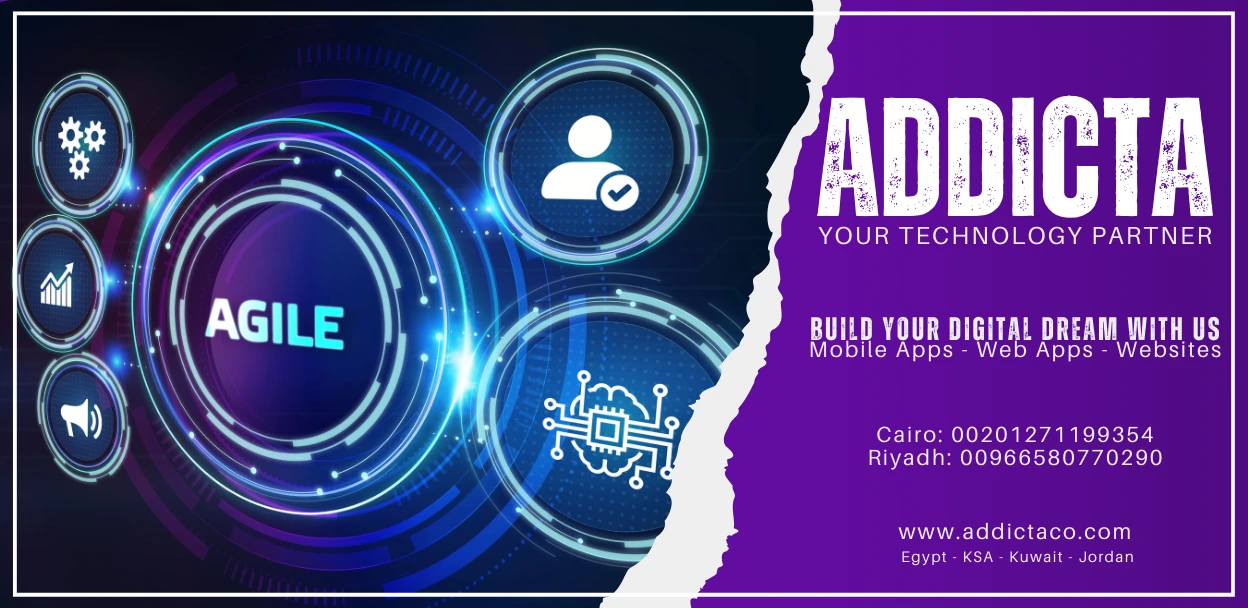Due to the fast-paced digital world, mobile app development needs to be dynamic and responsive to change. Agile methodology in mobile app development has emerged as a powerful approach to meet these demands, offering flexibility and iterative improvement. This blog post explores Agile methodology in mobile app development, explaining its principles, how it works, its benefits, and best practices for successful implementation.
What is Agile Methodology in Mobile App Development?
Agile methodology in mobile app development is a project management and product development approach that emphasizes flexibility, collaboration, and iterative progress. In the context of mobile app development, Agile focuses on delivering small, incremental updates and improvements to the app, allowing for continuous enhancement based on user feedback and evolving requirements. This approach contrasts with traditional development models, which often involve lengthy development cycles and rigid processes.
Key principles of Agile methodology in mobile app development include:
- Iterative Development: Work is completed in small, manageable units called iterations or sprints.
- Customer Collaboration: Frequent feedback from customers is incorporated into the development process.
- Adaptability: The development process is flexible and can adjust to changing requirements and market conditions.
- Cross-functional Teams: Teams consist of members with diverse skills who collaborate closely throughout the project.
How Does Agile Mobile App Development Work?
Agile methodology in mobile app development operates through a series of iterative cycles, each aimed at delivering a functional piece of the app. The process typically involves the following steps:
- Planning: At the start of each iteration, the team defines the scope, objectives, and user stories (requirements) for the upcoming sprint. This involves prioritizing features based on business value and user needs.
- Design and Development: The team works on developing and designing the app’s features based on the user stories and requirements defined during the planning phase. This step is focused on creating functional components and ensuring they meet the defined criteria.
- Testing: Each iteration includes testing to ensure that the developed features work as expected and meet quality standards. This involves functional testing, user acceptance testing, and performance testing.
- Review and Feedback: At the end of each iteration, the team reviews the completed work and gathers feedback from stakeholders and end-users. This feedback is used to make necessary adjustments and improvements in the next iteration.
- Deployment: Once the app has been developed and tested, it is deployed to the app stores or distributed to users. Agile methodology in mobile app development allows for continuous deployment and updates based on user feedback and market changes.
- Iteration: The process repeats with new planning, design, development, testing, and feedback cycles, continuously improving the app and adding new features.
Why is Agile Methodology Good for Mobile App Development?
Agile methodology in mobile app development offers several advantages:
- Flexibility: Agile methodology in mobile app development allows teams to adapt to changing requirements and market conditions. This flexibility is crucial in the mobile app industry, where user preferences and technological advancements can shift rapidly.
- Faster Time-to-Market: By breaking down development into smaller iterations, Agile methodology in mobile app development helps teams deliver functional components more quickly. This incremental approach allows for faster release cycles and quicker time-to-market.
- Enhanced Collaboration: Agile methodology in mobile app development emphasizes communication and collaboration among team members, stakeholders, and users. This collaborative environment fosters better alignment with user needs and business goals.
- Continuous Improvement: Agile methodology in mobile app development means that the app is constantly evolving and improving based on user feedback and testing results. This leads to higher-quality apps that better meet user expectations.
- Risk Management: Frequent testing and feedback help identify and address potential issues early in the development process. Agile methodology in mobile app development reduces the risk of major problems and ensures a more stable final product.
- Customer-Centric Development: Agile methodology in mobile app development prioritizes user feedback, ensuring that the app’s features and functionality align with user needs and preferences. This user-centered approach enhances overall user satisfaction.
7 Best Practices for Implementing Agile Methodologies in Mobile App Development
- Define Clear Objectives: Clearly outline the goals and objectives for each iteration to ensure that the team is focused on delivering valuable features and improvements.
- Prioritize Features: Use a backlog to prioritize features and requirements based on their business value and user impact. This helps the team focus on delivering the most important aspects first.
- Foster Collaboration: Encourage open communication and collaboration among team members, stakeholders, and users. Regular meetings and feedback sessions help keep everyone aligned and informed.
- Embrace Change: Be prepared to adapt to changing requirements and market conditions. Agile methodology in mobile app development thrives on flexibility and responsiveness, so be open to adjusting plans as needed.
- Incorporate User Feedback: Regularly gather and incorporate feedback from users to ensure that the app meets their needs and expectations. This helps guide development and improve user satisfaction.
- Maintain Transparency: Keep stakeholders informed about the progress of the project, including completed work, upcoming tasks, and any issues or challenges. Transparency builds trust and ensures that everyone is on the same page.
- Focus on Quality: Prioritize testing and quality assurance throughout the development process. Regular testing helps identify and address issues early, leading to a more reliable and stable app.
Conclusion
Agile methodology in mobile app development offers a robust framework for creating flexible, collaborative, and responsive development processes. By embracing Agile practices, businesses can improve their development processes, deliver high-quality apps more efficiently, and better meet the needs of their users. Implementing Agile effectively involves clear objectives, prioritization, collaboration, and a focus on quality, ultimately leading to successful and impactful mobile app projects.

